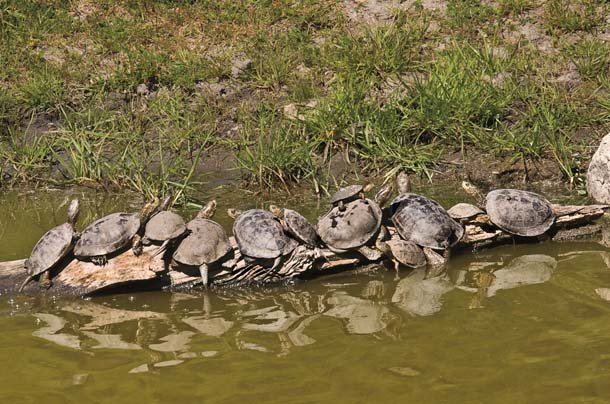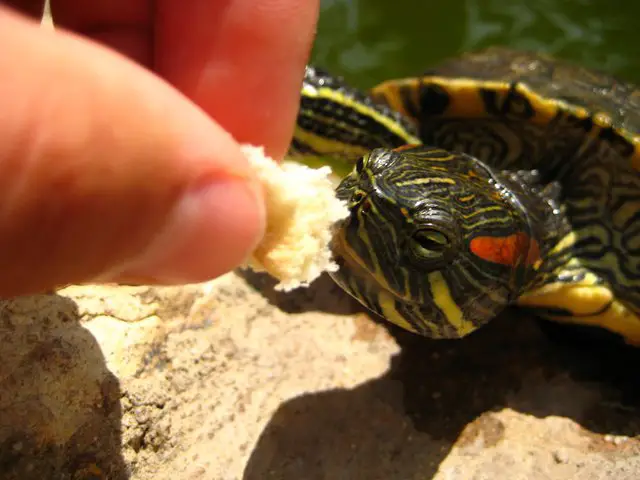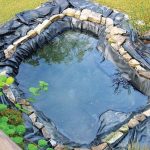Feeding pond turtles is an essential aspect of their care and well-being. Providing them with a balanced and nutritious diet is crucial for their health and longevity. Pond turtles are omnivores, which means they eat both plant and animal matter. In the wild, they feed on a variety of foods, including insects, fish, aquatic plants, and algae. When kept as pets, it is important to replicate their natural diet as closely as possible to ensure they receive all the essential nutrients they need to thrive.
1. Commercial Turtle Food
One of the easiest ways to feed pond turtles is by offering them commercial turtle food. These pellets are specially formulated to meet the dietary needs of turtles and are usually enriched with vitamins and minerals. When choosing a commercial turtle food, opt for high-quality brands that contain real ingredients and minimal fillers. Pellets should be size-appropriate for your turtle’s age and species.
2. Fresh Vegetables and Fruits
Vegetables and fruits are an essential part of a pond turtle’s diet. Offer a variety of fresh produce such as leafy greens (e.g., kale, collard greens, and romaine lettuce), carrots, squash, bell peppers, and fruits like berries, melons, and apples. Chop the vegetables and fruits into bite-sized pieces to make it easier for the turtles to eat.
3. Live Food
Live food items can be a great addition to your pond turtle’s diet. Crickets, mealworms, earthworms, and feeder fish are excellent protein sources that can help diversify their diet. Make sure to purchase live food from reputable sources to avoid introducing parasites or diseases to your turtles.
4. Aquatic Plants
Pond turtles also enjoy eating aquatic plants such as duckweed, water lettuce, and water hyacinth. These plants not only provide essential nutrients but also help simulate their natural habitat. Just ensure that the plants are free from pesticides or other harmful chemicals before offering them to your turtles.
:strip_icc()/how-much-should-i-feed-my-red-eared-slider-1238367-5c59c9c646e0fb00012bb344.png)
Credit: www.thesprucepets.com
5. Calcium Supplements
Calcium is crucial for maintaining healthy bones and shells in pond turtles. To ensure they are getting an adequate amount of calcium, you can offer them calcium supplements. These supplements come in various forms, including cuttlebones, calcium blocks, and powdered calcium that can be sprinkled on their food.
6. Feeding Frequency
When it comes to feeding pond turtles, it is essential to establish a feeding routine. Young turtles may require daily feedings, while adult turtles can be fed every other day. It is important not to overfeed your turtles as obesity can lead to health issues. Monitor their weight and adjust their diet accordingly.

Credit: steemit.com
7. Hydration
Aside from food, hydration is also crucial for pond turtles. Ensure that they have access to clean, dechlorinated water at all times for drinking and soaking. Soaking helps turtles stay hydrated and aids in digestion. Additionally, providing a shallow water dish where they can soak and swim will promote their overall well-being.
8. Monitoring and Adjusting
Regularly monitor your pond turtles’ eating habits, weight, and overall health. If you notice any changes in their appetite, behavior, or appearance, it could be a sign of an underlying health issue. Consult a veterinarian specializing in reptiles if you have concerns about your turtle’s diet or health.
By providing a balanced diet that includes commercial turtle food, fresh vegetables and fruits, live food, aquatic plants, calcium supplements, and ensuring proper hydration, you can help your pond turtles lead a healthy and fulfilling life. Remember that each turtle is unique, so it may take some trial and error to determine their favorite foods and feeding schedule. With proper care and attention, your pond turtles will thrive and bring you joy for years to come.





